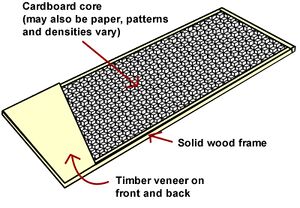Workstation Desk
The Problem
After moving into my current residence, I bought a cheap desk that, admittedly, was way too small right from the start. As far as I can tell, the IKEA BRUSALI desk seems to be intended for children to do homework at, not to house a desktop computer. And seeing as my home office is in a basement that has seen it's share of water issues, I would rather my computer live as high up off the ground as possible... After making do for several years, a change in my work schedule has me working from home more often, which makes the "desk issue" even more pressing. It's time to do something. And if I'm going to do it, I want to do it right.
I had several ideas of what I wanted in a desk, but the two primary concerns were that it be large and sturdy. I briefly toyed with the idea of building a desk with a full 4x8' sheet of plywood, but that really would be quite excessive. So I set out searching for commercial options, scrolled through Craigslist, and ended up really falling in love with large industrial work tables. I could get them configured to order, with several choices of desktop material, and they were appropriately large and heavy duty. They also start at $600-800 for the most basic version. Eventually I found a used one for $200 but it was snatched up before I could even send an email to the seller.
Fine. I guess I'll build my own. Some napkin math says I should be able to do it for under $200, depending on how I choose to finish it. Shouldn't be too hard, right?
The Process
My initial thought for specs were: 30 inches deep, 6-8 feet wide, and just under 30 inches tall.
Wanting a heavy top, I thought about purchasing several 2x4s and gluing them together like a janky butcher block. If I went with a 30" depth, 20 2x4s will do the trick... And at around $3 for the cheapest framing studs from my local lumber yard, that's only $60. Not too bad. But of course, if you've ever worked with cheap framing 2x4s, you know that getting a handful that are in decent shape is tough. Finding 20 of them might be asking too much. Not to mention that at 8 feet, a 30" wide 2x4 butcher block top would weigh over 180 pounds! If we cut it down to a 6 feet, that's still around 140 pounds!
Okay, next thought was to stack two 3/4" plywood sheets together for a nice 1.5" thick top. Decent plywood is currently around $40 a sheet, so two of those ends up close to $100. Ouch. Also, looking at the weight again, each 4x8' sheet is around 67 pounds. Two of those would be over 130 pounds - still not something that would be fun to move around. But doing some quick math says that 30"x6' is approximately 47% the total area of 4'x8', meaning that the top would probably end up closer to 63 pounds total. Also, I could bring the cost down some by using a cheaper plywood or even OSB for the piece that would be at the bottom, but that doesn't help with the weight at all.
Then I struck on another idea - I was inspired by the construction of cheap interior doors. I've been using one as a makeshift workbench for over a year now and it hasn't sagged any noticeable amount. If you're unfamiliar, they are generally a composite construction of two thin panels glued on top of a wooden frame (where the door hardware attaches) and a mostly hollow corrugated cardboard middle. Unfortunately I don't have access to any thick corrugated cardboard or second-hand coroplast, and plastic panels of that nature tend to be more expensive per square foot than plywood. But I do have easy access to rigid foam board insulation! A 4x8 sheet that's one inch thick will cost me around $12 and only weighs a little over 2.5 pounds. Using this, I can laminate both sides with 1/4" plywood ($25 and 22 pounds for the nice stuff, $13 and 28 pounds for the cheapest), and end up with a top that's 24.6 pounds for around $50. Of course, there are some caveats... I will also need to purchase adhesive for about $3, and in order to use it in the way I want, I will need to build an internal structure out of 2x4s or similar. Since 2x4s (and most common dimensional lumber) aren't the actual dimensions that they claim, I went on a search for lumber that's actually 1" thick to match my insulation panel. It turns out that most deck boards are measured at 5/4" thick for some reason, which in real life is about a hair off from exactly 1". Cool, cool... So two of those will add another $23 and 20 pounds, making the total approximately 45 pounds and just under $80. Still not too bad!
IKEA's closest standalone table tops are:
- 9" shorter, 1.5" wider, and 3/8" thinner. Weighs 30 pounds and costs $90.
- 6" longer, 6 3/8" narrower, and 1/8" thinner. Weighs 26 pounds and costs $90.
- Both are made of fiberboard, particleboard, honeycomb structure paper filling (70% recycled), plastic edging, and acrylic paint.
- And I don't know where the internal structure is, so I would likely just use their leg system to finish the whole desk since there are already pre-drilled holes.
At this point, everything is telling me to just go for it. So I just need to come up with a plan.
The Plan
First, the specs for my current desk:
- 20.5" deep
- 35.5" wide
- 25 3/4" leg clearance
- 28 3/4" to the desktop
And the new specs I'm aiming for:
- 30" deep
- 72" (6 ft) wide
- 28" legs
- 29.5" to the desktop
